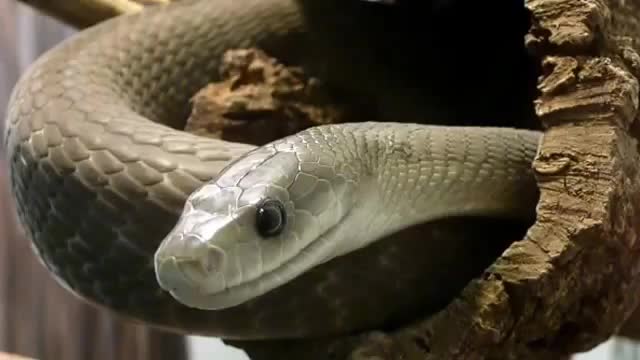Premium Only Content

Black Mamba Facts: 20 facts about Black Mamba
The black mamba is Africa's largest and most venomous snake and is often found on the ground or occasionally in trees.
It is called a black mamba because of its blue-black mouth lining. It's skin colour is a brown to grey colour with a lighter underside.
The black mamba is one of the fastest snakes in the world, and can slither at speeds of up to about 20 kilometres per hour.
The black mamba is a very agile species that actively hunts warm-blooded prey.
Although it is one the most feared snakes in the world, the black mamba prefers to avoid contact with humans as they are generally shy creatures. However, if it does bite a human and there is no treatment, its bite can kill a human within 20 minutes.
The black mamba has short, fixed fangs at the front of its mouth and has excellent vision.
It can measure up to 4.3 m and weigh in at up to 1.6 kg.
If a black mamba is cornered, it will try and escape. However it can adopt a defensive posture, by raising its head, spreading its neck like a cobra, displaying its black mouth lining and hissing.
If a black mamba is further provoked, it will strike repeatedly, injecting its attacker with large amounts of deadly neurotoxins and cardiotoxins, which affect the nerves and heart
The neurotoxins of the venom of a black mambas venom will cause muscle paralysis, and will eventually killing the victim through respiratory failure.
They tend to eat warm-blooded prey such as bushbabies, rock hyraxes, bats and other small mammals, as well as birds.
Their only real predators are birds of prey, however its young are occasionally predated by other snakes.
They are active during the day, often basking in the branches of a tree in the early morning before they go hunting.
This black mamba usually has a refuge such as a hole, hollow log, rock crevice or termite nest, to which it returns at night.
They will breed between October and November, when the males will compete for females by entwining their bodies and attempting to force their opponent to the ground.
The female black mamba will lay up to 17 eggs often inside a termite mound and they will hatch after 80 to 90 days.
In some studies, young black mambas have rarely been observed, possibly because they grow rapidly and can reach almost two metres in length in their first year, and because they are likely to be more arboreal than the adults.
The black mamba can live for up to 11 years or more in the wild, or for up to 20 years in captivity.
The black mamba is extremely widespread across sub-Saharan Africa, with individuals sighted as far north and west as Senegal, and as far south as north-eastern South Africa. Most reports of this species come from eastern and southern Africa They live in a number of different habitats, including well-wooded savannah and riverine forest, particularly in areas with an abundance of rocky hills and large trees.
-
 12:03
12:03
Space Ice
12 hours agoSteven Seagal's China Salesman - Mike Tyson Knocks Him Out - Worst Movie Ever
31.4K15 -
 11:37
11:37
Degenerate Jay
12 hours ago $4.91 earnedJames Bond Needs Quality Over Quantity From Amazon
51.4K3 -
 15:23
15:23
Misha Petrov
12 hours agoTrad Wives & Girl Bosses Go to WAR!
46.1K42 -
 2:03:11
2:03:11
TheDozenPodcast
10 hours agoFootball villain fighting the state: Joey Barton
39K1 -
 LIVE
LIVE
Scottish Viking Gaming
13 hours ago💚Rumble :|: Sunday Funday :|: Smash the Blerps and Vape the Terpes
343 watching -
 1:45:00
1:45:00
RG_GerkClan
15 hours ago🔴LIVE Sunday Special - It's Time for World Domination - Civilization VII - Gerk Clan
78.9K27 -
 LIVE
LIVE
Major League Fishing
4 days agoLIVE Tackle Warehouse Invitationals, Stop 1, Day 3
134 watching -
 23:34
23:34
marcushouse
16 hours ago $15.83 earnedBREAKING: Starship Launch IMMINENT – But What’s This SURPRISE Flight 9 Plan?! 🚀🔥
118K15 -
 8:43
8:43
Film Threat
1 day agoTHE MONKEY | Film Threat Reviews
105K3 -
 15:55
15:55
TSPLY
1 day agoThe Media Is Very Afraid Of FBI Director Kash Patel
87.4K64